Early October 2020
In the sun it’s hot, but sitting here at my table, waiting for my drink and watching the liquid trickle down from a triple tired fountain, its water sparkling with the light of the setting sun, I feel the first hints of winter’s cool begin to blow along the river valley, up Paseo de los Tristes, in Granada, Spain.
Near the fountain, a man takes the picture of his girlfriend, posing in front of the Alhambra. She quickly, furtively, takes her mask off, before replacing it. The picture is with her fluffy, cute black and white dog, who presumably cares little for the ‘Virus’ that has taken the wind out of the sails of so many. A young busker, walks up and down, playing an old Spanish tune on acoustic guitar, and across from me, a large family tries to drown their fears with each other and ample shots of hard liquor. That looks normal, but whenever they get up, or their little doll-like girl waddles away from the table, the masks come back on, with nervous stares directed into the air and at the punters on the surrounding tables.
Although I’m free to wander the streets, unlike in the spring, and I’m free in my mind, I feel the constrictions of the slowly tightening world around me, like the ever-intensifying grip of a giant serpent.
The ability to plan, to journey, has been taken away, for the foreseeable future…Uncertainty rules in all walks of life. Friends, who have built a tenuous life in theatre, performance, and travel, face the death of all they have worked for. Any certainty for me only extends to the next week. I realise this is the reality for most in this world, apart from the super-rich, who continue to expand their excess to the point that one man can have more than a country in its entirety. Here in Spain, a country that gets much of its pleasure from music, touch, and interaction, passion has been stripped away and waits for freedom to return.
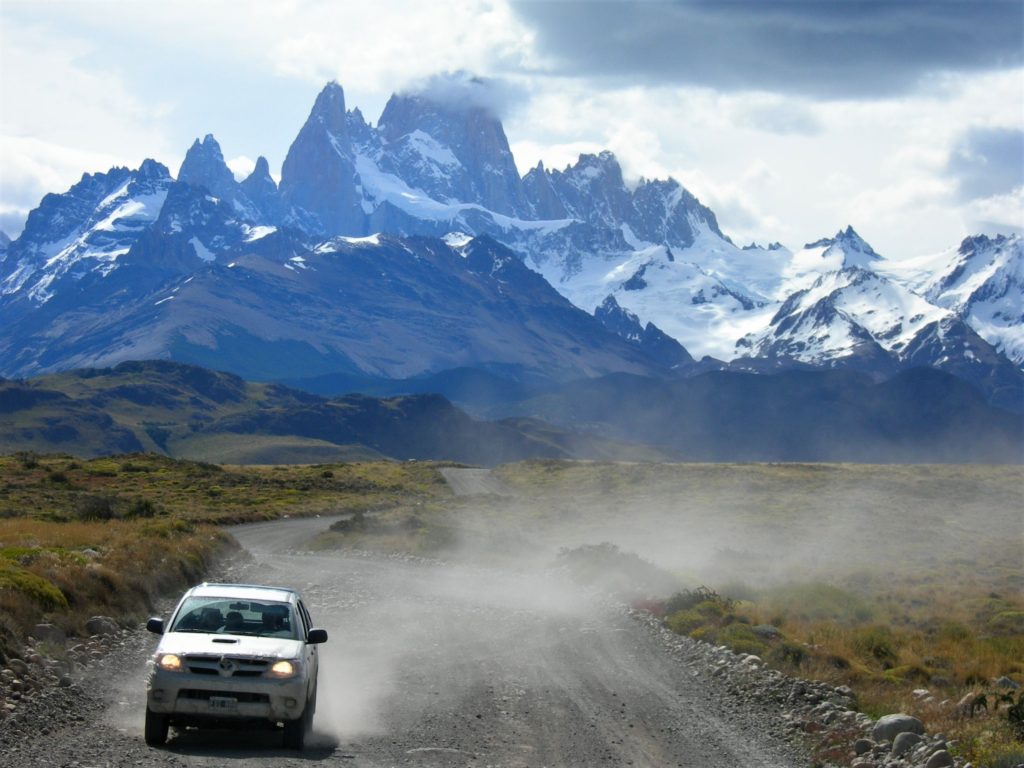
The coils of the ‘Virus’ tighten, fires burn across the globe, in the American West, in the Amazon, Siberia, filling the air with dust and across the world the light of true freedom to choose, to criticize democracy, seems to dim with each day of bad news. But still the cool late summer breeze caresses my skin, sifting up the valley, still people on other tables laugh, wide, warm smiles taken between gulps of alcohol and casual munches on Tapas. Life still runs hot in these people’s blood.
I need to breathe…I need a change of scene. Space. If there was ever anywhere I visited where there is a sense of endless space, it is the southern tip of South America, Patagonia. I remember driving across the endless plain, with nothing but rustic cattle and sheep ranches for miles and miles, the vastness and loneliness of the land itself a tonic.
It is a place that has not been overrun, where emptiness itself speaks of possibilities. A frontier, a place where another life is possible.
The bus continues across the plain for hours and I drift to sleep. When I awake the scene is no longer the same. We still wind down a dusty road, only one other vehicle in sight, churning up a cloud of dust as grinds towards us. But behind the distant jeep, a great line of jagged, spear-like peaks thrust up from the flatlands, lordly and defiant of the emptiness around. The Andes. This is Fitzroy Massif. The air is dry. As we approach the mountains, green appears and the chill wind that comes from the vast Patagonian Icecap welcomes us to another world. We stop below the mountains, in a small bunch of ragtag shacks that passes for a town in Patagonia…El Chalten…shoehorned between the Patagonian Plain and the peaks. It’s nothing to look at, but El Chalten’s location, below the magnificence of the Fitzroy Massive, makes it the base and focus of trekking in Argentinean Patagonia.
I need to breathe.
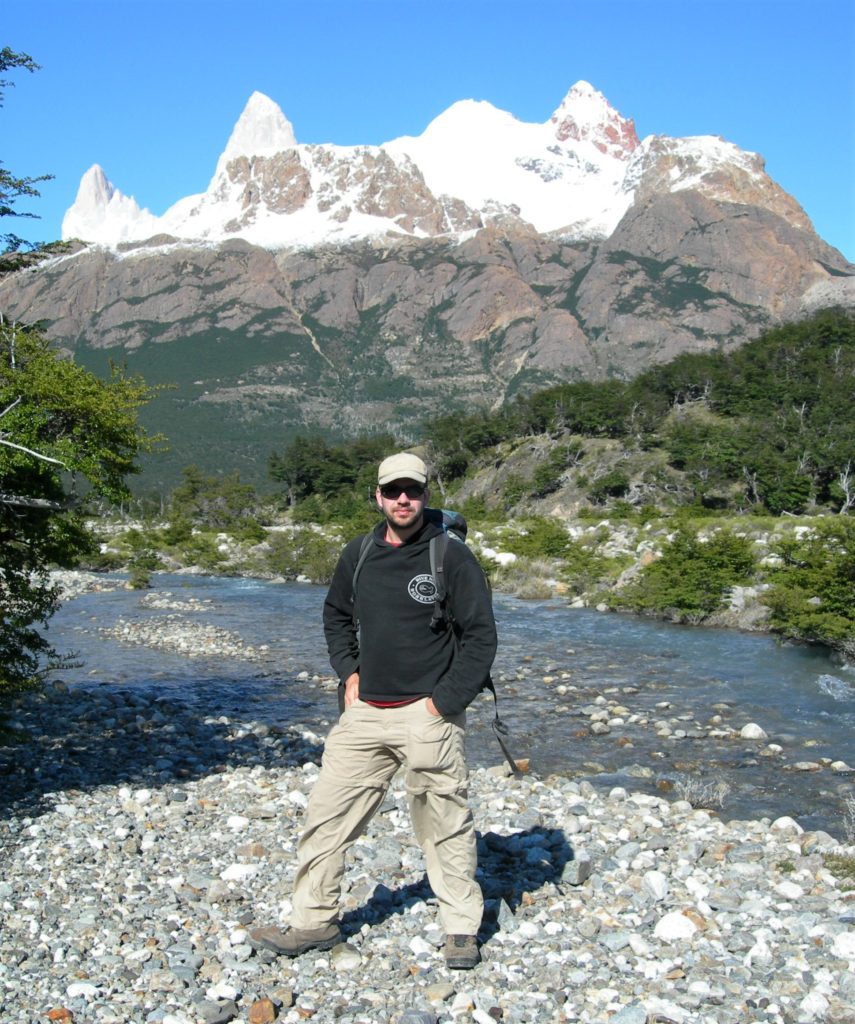
The vast space and emptiness of Patagonia offers something, a feeling that has long since died in our overpopulated, over-busy world: the possibility, the suggestion, even if only a fantasy, that some ingenious people, in search of true freedom, could carve out a life for themselves, barely influenced by the world around – even if the reality is harder and harsher.
I’ll admit this fantasy of pure freedom is one I didn’t fully live. I was working as a tour and trekking guide at the time, so I had hectic schedules, ferrying my clients around this vast landscape and catering to their needs; tiring but fun and rewarding work, where I essentially became a business partner to the locals.
Hiking out of El Chalten, one of the most rewarding routes is a long day hike to the ‘Laguna de los Tres’, a hike into magnificent country that has to be seen to be believed. The route quickly leaves the windswept plain behind and heads into hills cloaked in dense Patagonian forest and valleys filled with the babble of rushing streams. In the shadowy forest, the pensive silence is broken with machine-gun rattle of Magellanic Woodpeckers, consumed in their daily labour, making the most of the brief Patagonian summer. Up ahead the intimidating verticality of the Fitzroy Massive looms ever larger and more dominating, lording supreme above a landscape of sculpted rock and ice.
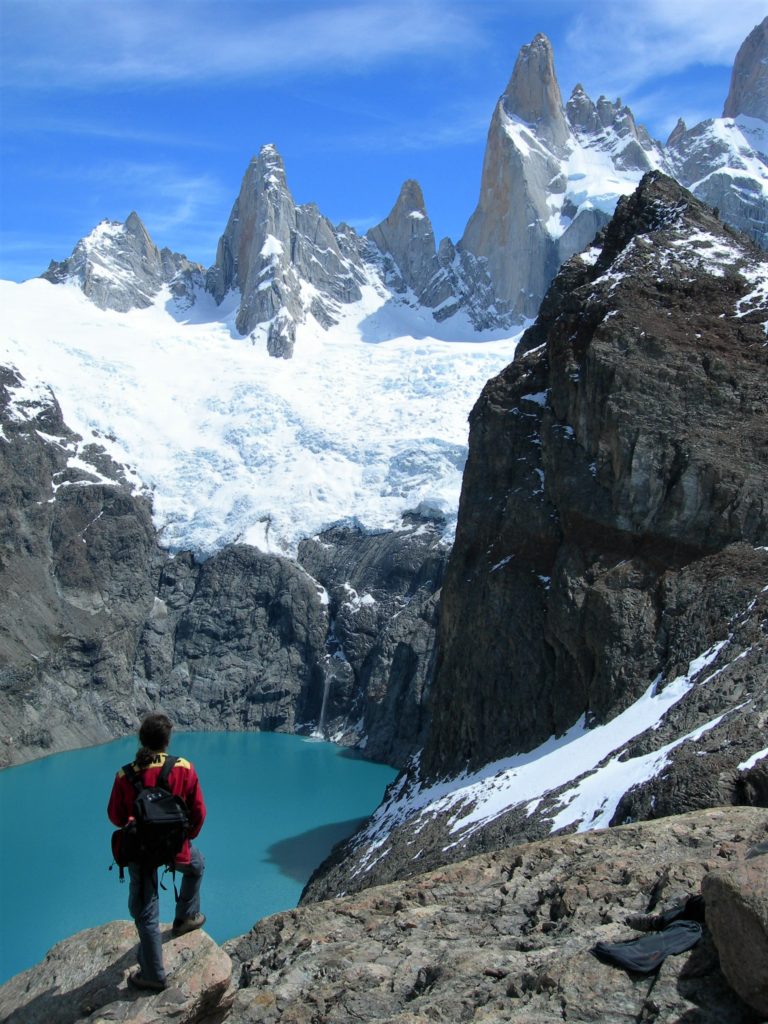
Laguna de los Tres is set in a ‘hanging valley’, an eyepopping luminous, deep blue lake (frozen early in the season) at the base of Fitzroy Massive, fed by the glaciers cascading down from the surrounding peaks which soar high above. The walls of Fitzroy peak are so steep that little snow and ice can find a cling to it sides, but lurking behind this mountain is Southern Patagonian Icefield, the largest expanse of ice in the Southern Hemisphere, outside of Antarctica. More than 12,000 square kilometres of frozen wilderness. The sculpted beauty of this scene is difficult to describe, so I will let the photos do the talking…
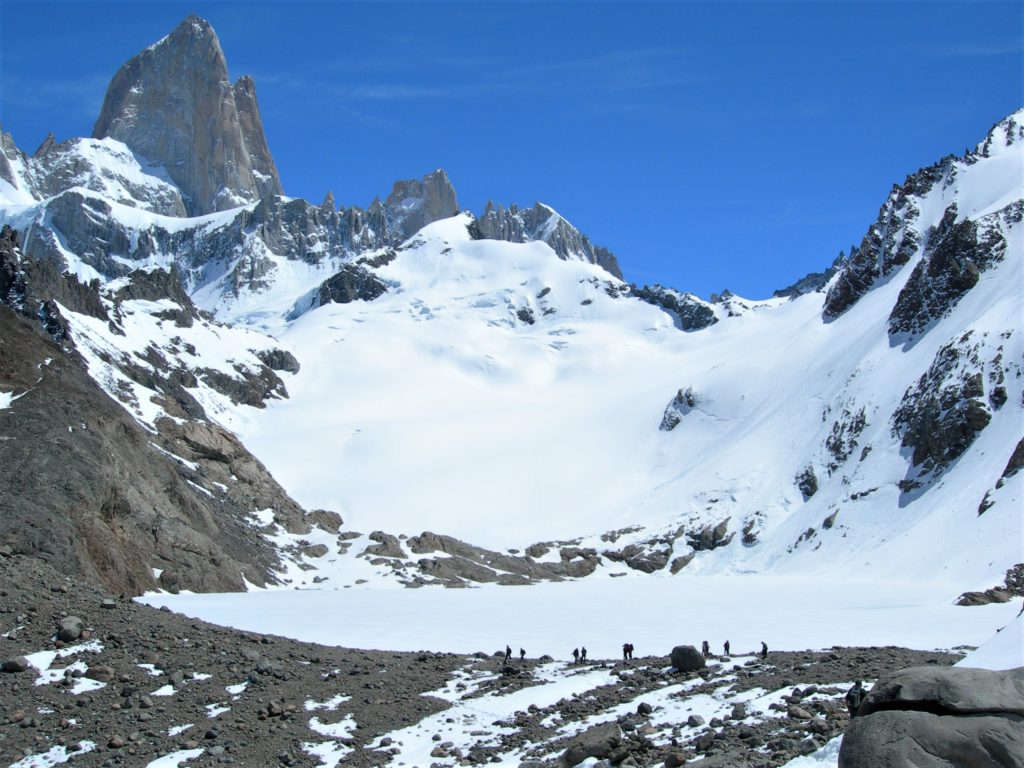
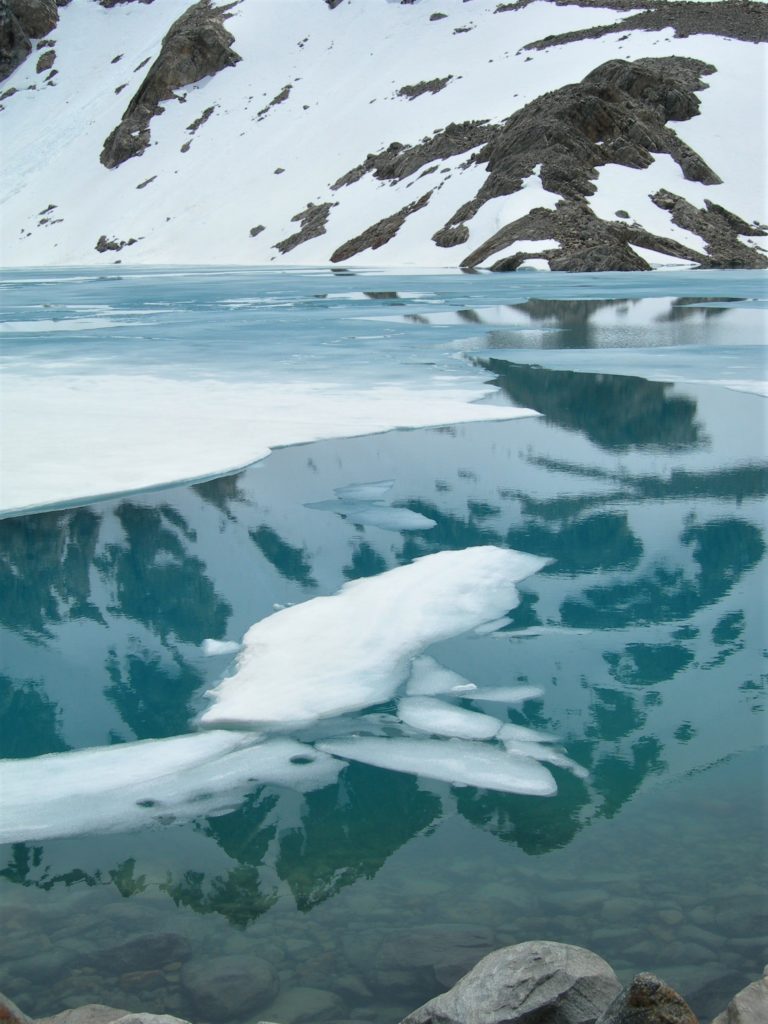
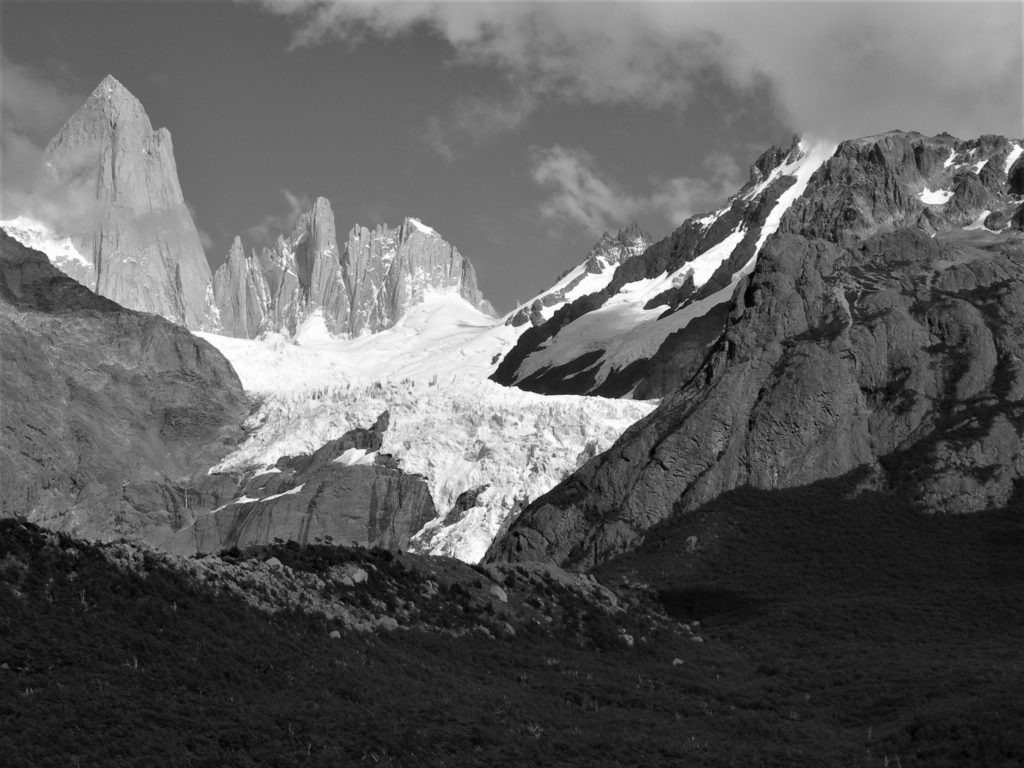
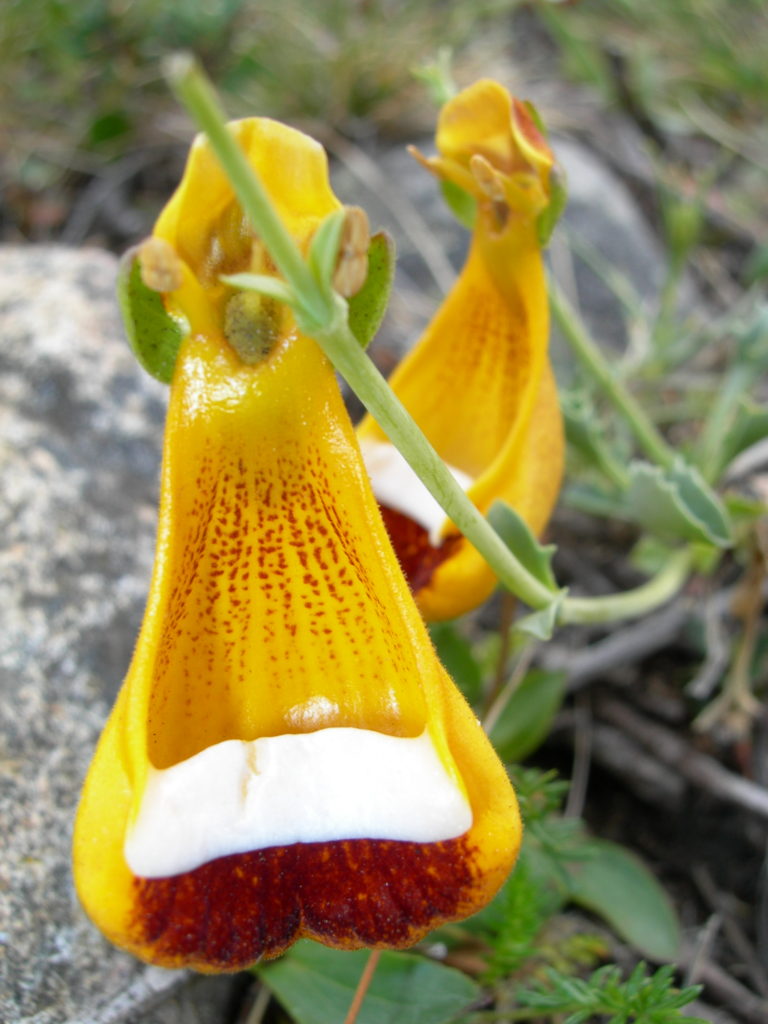
A treasured memory of my time in Patagonia is taking a lady – I’ve long forgotten her name- up to the base of the magnificent Torres del Paine in Chilean Patagonia. Torres del Paine is a shining light in Patagonian conservation, famed not only for the stunning mountain landscape of rugged mountains, lakes, and grinding glaciers but also for its healthy populations of Patagonian wildlife. Animals such as Guanacos – a wild relative of the Llama, and Andean Condors, the largest of all flying birds, are thriving here, protected by strictly enforced regulations. Torres del Paine and several surrounding private ‘ranches’ are now considered the number one viewing location in the Americas to see the region’s apex predator, the Puma or Mountain Lion. Many local businesses benefit from the presence of these big cats, animals that are almost impossible to see on a regular basis elsewhere. Hunted and persecuted across much of their range, in Torres del Paine they have become the park’s ‘celebrities’, with people travelling across continents to witness these lords of the harsh Patagonian steppe in action.
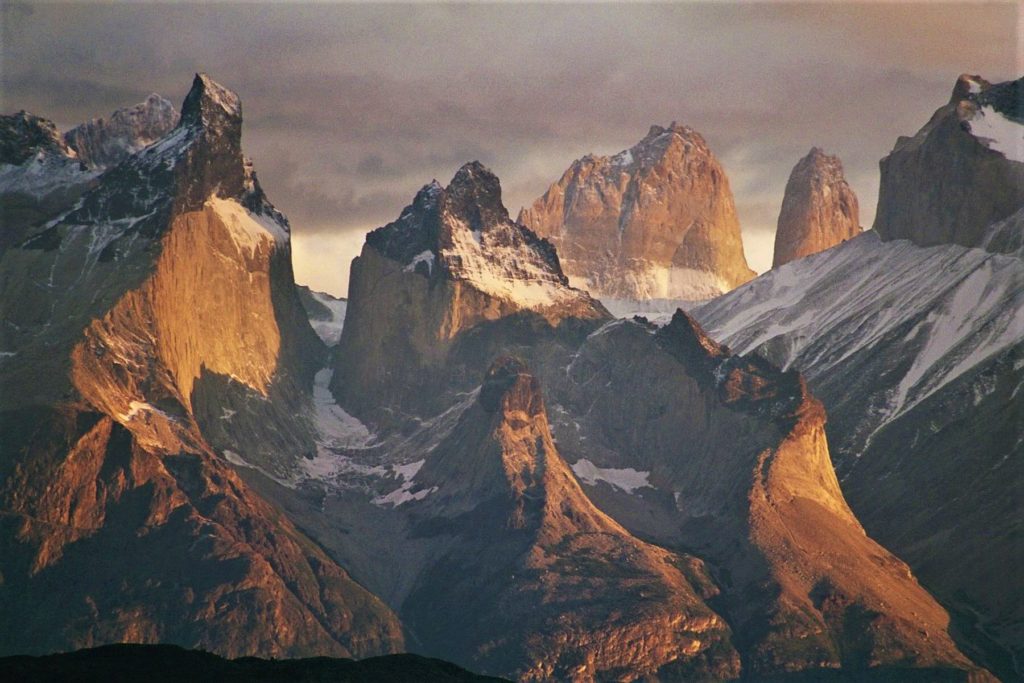
The lady I took on that trek to the Torres, was a feisty, intelligent woman, perhaps in her sixties, full of curiosity and humour. She was also dying of cancer and had less than a year to live. Nothing focuses your priorities more than the knowledge of approaching death, with every day precious. One of her items on her ‘Bucket List’ was to explore and experience the glory of wild Patagonia, to live every day to its maximum. Over my short time with the lady, we developed a strong friendship. I loved her positivity and open friendly nature. She was already considerably weakened by the cancer, and on the trek, which took about 4 hours each way, I hung behind the main part of the group I was guiding to help her on her way. The walk was exhausting for her, but she resolutely refused to turn back; it was an experience she would not forsake.
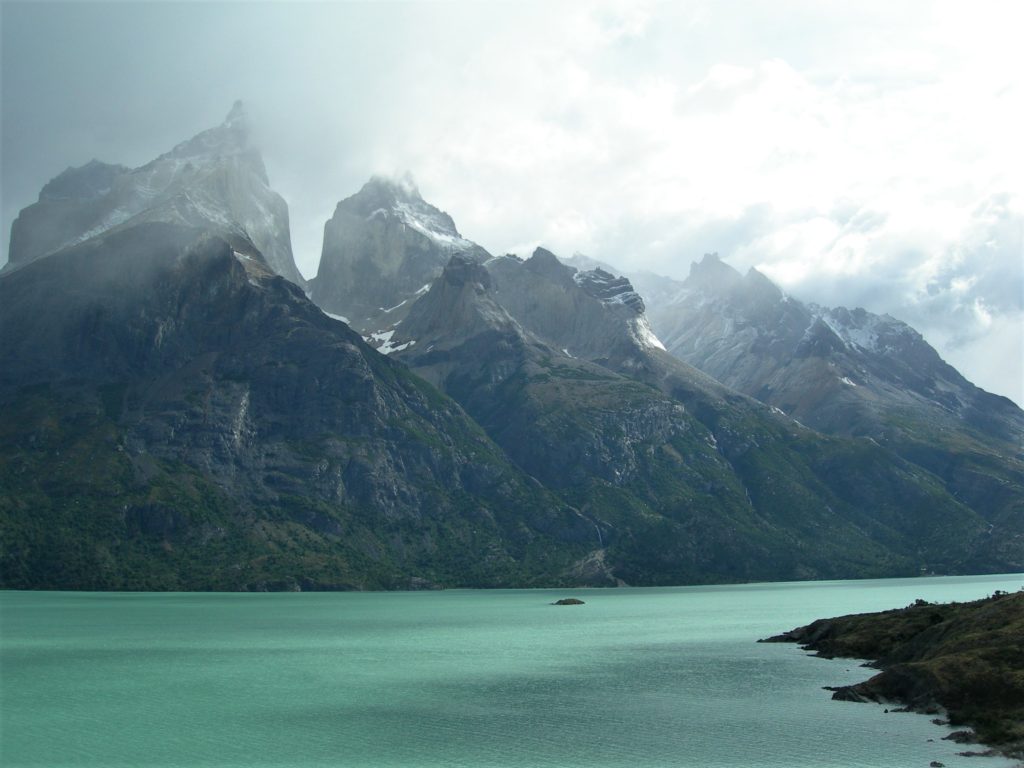
When she finally made it to the magnificent viewpoint below the epic vertical ‘Torres’ she cried tears of joy- and filled with pride and empathy for her I joined her. We stood in front of the milky green lake backed by a trident of mist-shrouded towers, hugged and celebrated the joy of life with laughter and with tears. A magic moment!
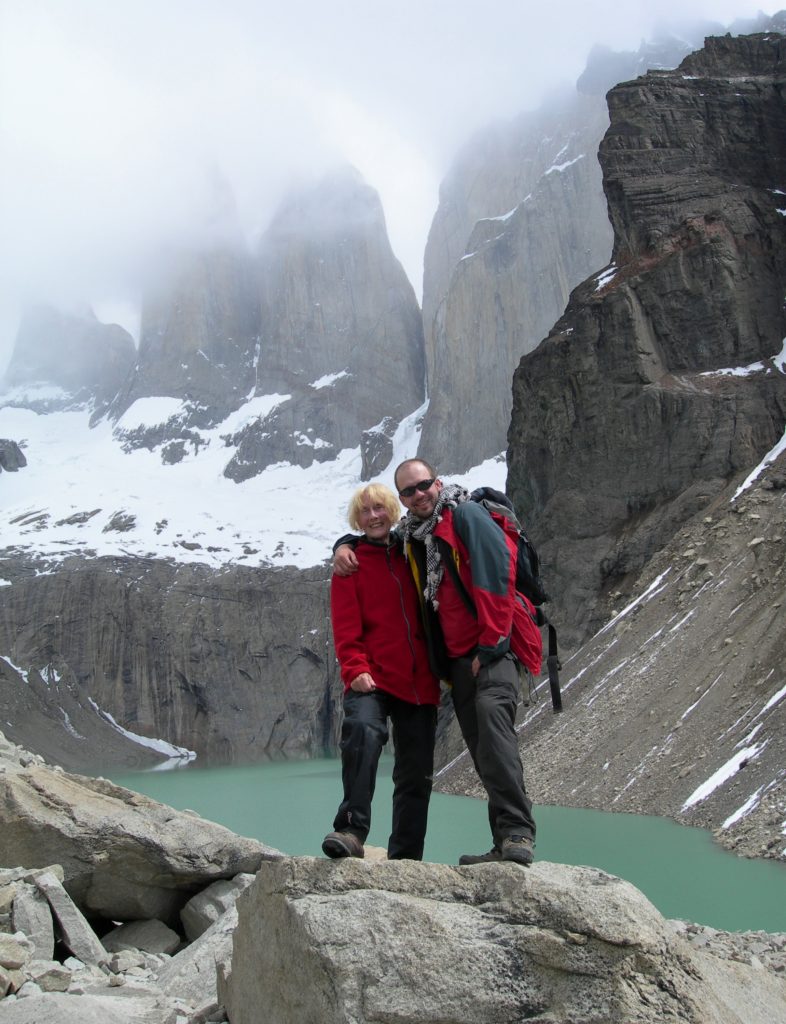
Although she died not long after, at that moment she brimmed with the hot fire of life. As Dylan Thomas would say: ‘Do not go gentle into that good night, old age should burn and rage at the dying of the light….Curse and bless me now with your fierce tears I pray….do not go gentle into the goodnight…’ She certainly encapsulated that sentiment to me!
My grandfather was the captain of a freighter in the 1930s and ’40s. When I was young, I would hear tales of wild adventures in Mexico and Latin America, of gun-toting bandits riding down to meet to Grandfather at ports on the Gulf of Mexico. When visiting my uncle in Scotland a few years ago he dug out a few ancient black and white photos of my grandfather. One of those images was a picture of his tanker, deck awash from huge waves battering the ship as they sailed through the Straights of Magellan. The strait is a wide channel separating the Tierra del Fuego, (‘The Land of Fire’, named for the fires of the native Yaghan people that Magellan fearfully described) the great Island at the fractured tip of South America, from the Patagonian mainland.
Years later I traversed The Land of Fire. It’s a place of forests, rugged mountains, and open steppe, cut with glaciers. I crossed the Magellan Straits and witnessed a landscape little changed from what my grandfather would have seen from the helm of that tanker. Luckily, the various times I crossed the channel, its waters were mercifully calm, but that fact that my long-passed grandfather had witnessed these same scenes added a very personal level of fascination for me, an attachment to the land that is the last stop before Antarctica.
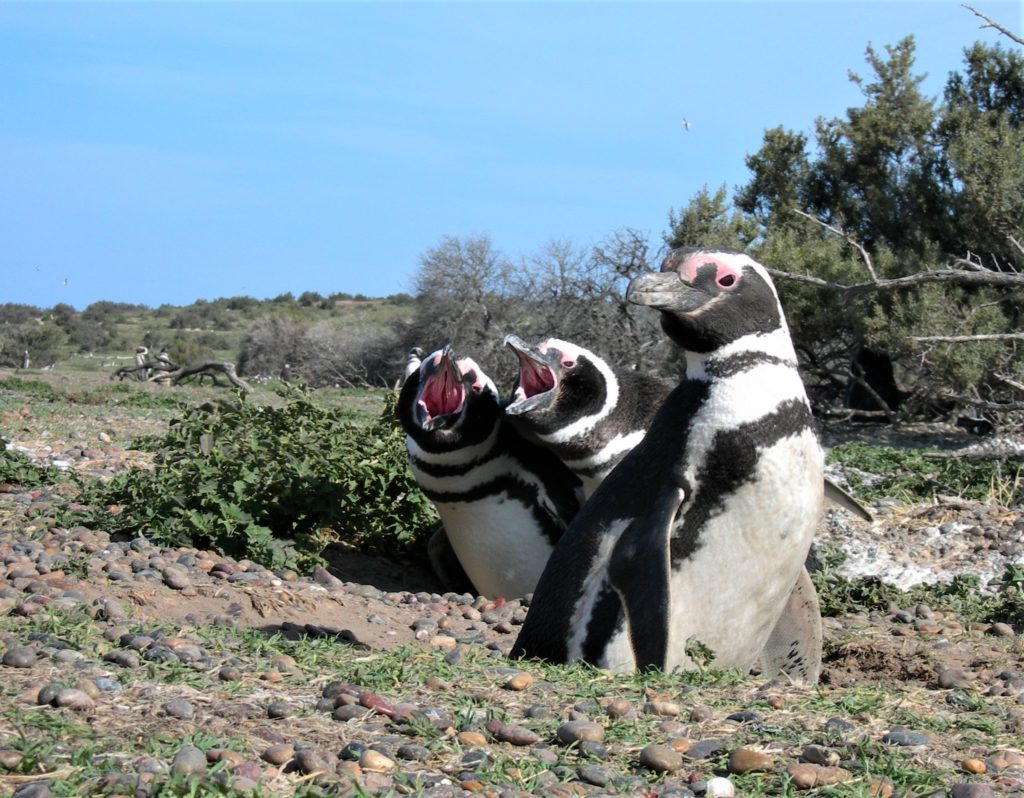
Magellanic Penguins feed on the rich marine life present in Patagonian waters, from the Valdes Peninsular to the Tierra del Fuego
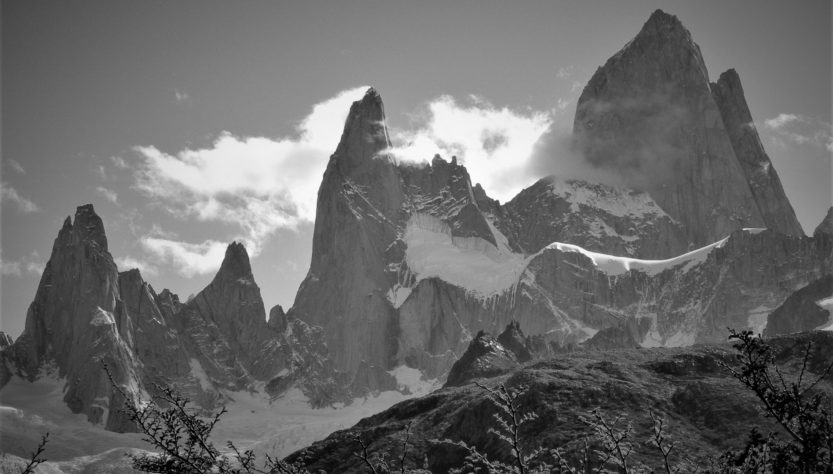
From lockdown to endless space, I like the contrast. We are all struggling with our lost freedom and insecurity and dreaming of distant lands. India awaits!!
Very touching story and amazing photos.
Thanks Ike, glad you liked the story!!